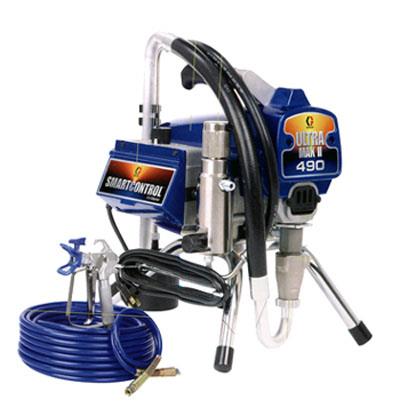A sprayer is a tool that creates a fine mist out of potions or other liquids so that it can be applied equally to various surfaces. Sprayers are a crucial and essential agricultural tool for managing pests and illnesses in rural areas.

The principles of spraying are divided into four types.
Bernoulli’s principle
According to Bernoulli’s principle, when a fluid has a high flow rate, the pressure is low; when it has a low flow rate, the pressure is high. Automatic fluid flow occurs from high pressure to low pressure. The air moving at a fast speed merges with the water running at a low speed as it travels through the three-pronged conduit. The fast breeze tears the water into tiny drips (imagine that the water flowing out of the faucet is slow at first, it is a water column, but then it becomes a drop after the speed gradually increases). These tiny water droplets turn into mist when they are sprayed out.
The principle of high-speed water flow breaking into small water droplets after encountering obstacles
It works on the theory of creating a high-speed water flow by forcing water into a thin tube; when the high-speed water flows contacts an obstruction, it fragments into minute water droplets. Like turning on the faucet and then using your fingers to plug it. The cost of this structure makes it popular for usage in household sprayers.
The liquid is thrown out by the centrifugal force principle.
The liquid is thrown out and dispersed into tiny droplets by the high-speed spinning atomizing disc, which operates similarly to how an umbrella rotates.
Principle of ultrasonic atomization
On the surface of the water, vibration can produce “waves.” Ultrasonic waves have a very high vibration frequency, which causes their “waves,” which are actually little water droplets, to have a very narrow wavelength. These tiny water droplets then condense as fog.
How to operate
When spraying, begin in a leeward direction, and the distance between the walking route and the spray should be at least that amount. According to the size of the wind speed, the spray fan’s size needs to be variable and controlled. The spray width should be smaller when the wind speed is low; otherwise, it should be larger, often 3 to 3.5 meters. To avoid the hot sun, it is better to spray in the morning, late afternoon, or on cloudy days. The ideal way to apply ultra-low volume sprays is with a systemic, fumigant, or gastrointestinal poison. Typically, 50 grams of dose are given to each mu. You can use the “equivalent approach” to determine how much water to add.
